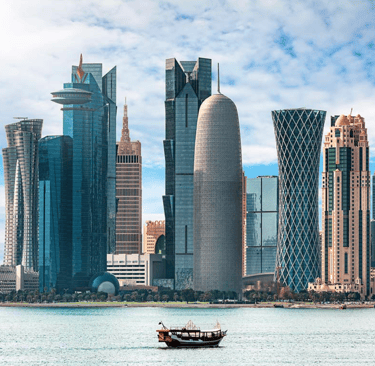Indoor Environmental Quality Around the World: Qatar’s Green Building Evolution and Human-Centric
6/25/20253 min read


In recent years, Qatar has rapidly positioned itself as a sustainability leader in the Gulf region. With the successful hosting of the FIFA World Cup 2022 underpinned by green stadiums and infrastructure, the country demonstrated that high performance and environmental responsibility can coexist—even in challenging desert climates. At the core of Qatar’s ongoing sustainable transformation is a commitment to Indoor Environmental Quality (IEQ), seen as a vital component of public health, comfort, and climate resilience. As new buildings rise in Doha and beyond, Qatar is rethinking the built environment through a lens that integrates energy efficiency and occupant well-being.
The Rise of Green Building in Qatar
Qatar’s green building agenda has gained speed through its National Vision 2030, which emphasizes sustainable urban development and improved quality of life. In line with this, the Gulf Organisation for Research and Development (GORD) developed the Global Sustainability Assessment System (GSAS)—a certification framework tailored to arid climates and the cultural context of the Gulf.
GSAS has now become the mandatory standard for all new public buildings in Qatar. It explicitly incorporates IEQ in categories such as thermal comfort, air quality, acoustic insulation, daylight access, and environmental control systems. The result is a new generation of buildings that address both macro-environmental impact and micro-scale health outcomes.
GSAS and the Focus on Indoor Wellness
Unlike generic green certification systems, GSAS was developed by local experts to respond to the specific climatic and cultural conditions of Qatar and the wider region. Its IEQ criteria are stringent and multifaceted. Projects must minimize VOC emissions, provide superior ventilation, and ensure thermal stability across all occupied zones.
GSAS-certified projects often go through post-occupancy evaluations to assess air quality, humidity control, and lighting performance. For instance, buildings that meet GSAS 4 Stars or higher often report up to 50% lower indoor pollutant levels and significantly improved occupant satisfaction.
Impact on Indoor Environmental Quality
Qatar’s investment in green building has led to measurable improvements in indoor environments. A study conducted by Qatar University’s College of Engineering showed that GSAS-certified buildings achieved a 35–45% improvement in indoor thermal comfort indices during summer months, compared to conventional buildings. Moreover, CO₂ concentrations and PM2.5 levels were consistently lower in schools and hospitals built to GSAS standards.
These findings are critical in a country where outdoor temperatures frequently exceed 45°C and sandstorms are common. High-performance insulation, smart HVAC systems, and air quality monitoring are essential not just for comfort, but for health and productivity.
Leading Projects and National Initiatives
Qatar Foundation’s Education City: Home to LEED and GSAS-certified academic buildings that use chilled beam systems, natural daylighting, and high-performance glazing to enhance IEQ.
Msheireb Downtown Doha: The world’s first sustainable downtown regeneration project, integrating shaded street networks, hybrid ventilation, low-VOC materials, and smart metering across residential and commercial zones.
Stadiums of the 2022 World Cup: Including Al Janoub and Education City Stadiums, which used passive design, mechanical ventilation, and GSAS certification to reduce heat stress and improve spectator comfort.
Sidra Medicine Hospital: Designed with biophilic elements, adaptive lighting, and advanced air filtration to ensure a healing environment for patients and staff.
These projects reflect a national shift toward building environments that are not only efficient but fundamentally healthier for those who inhabit them.
Looking Ahead: The Next Decade
Qatar’s trajectory suggests that by 2035, indoor environmental quality will be a default consideration in both public and private development. The government is expected to expand GSAS mandates to include residential buildings and retrofitting programs. Digital air quality dashboards, AI-driven energy optimization, and carbon-neutral construction techniques are all expected to scale.
Educational institutions such as Hamad Bin Khalifa University and Qatar Green Building Council are advancing research and professional training on IEQ, helping build local capacity for next-generation architecture and engineering.
Conclusion
Qatar’s green building movement demonstrates how locally grounded innovation can shape global best practices. By placing Indoor Environmental Quality at the center of its sustainability strategy, Qatar is not only mitigating climate impacts—it is elevating human experience within the built environment. As the country moves toward its 2030 and 2050 goals, its buildings will increasingly stand as models of both environmental and human performance.
